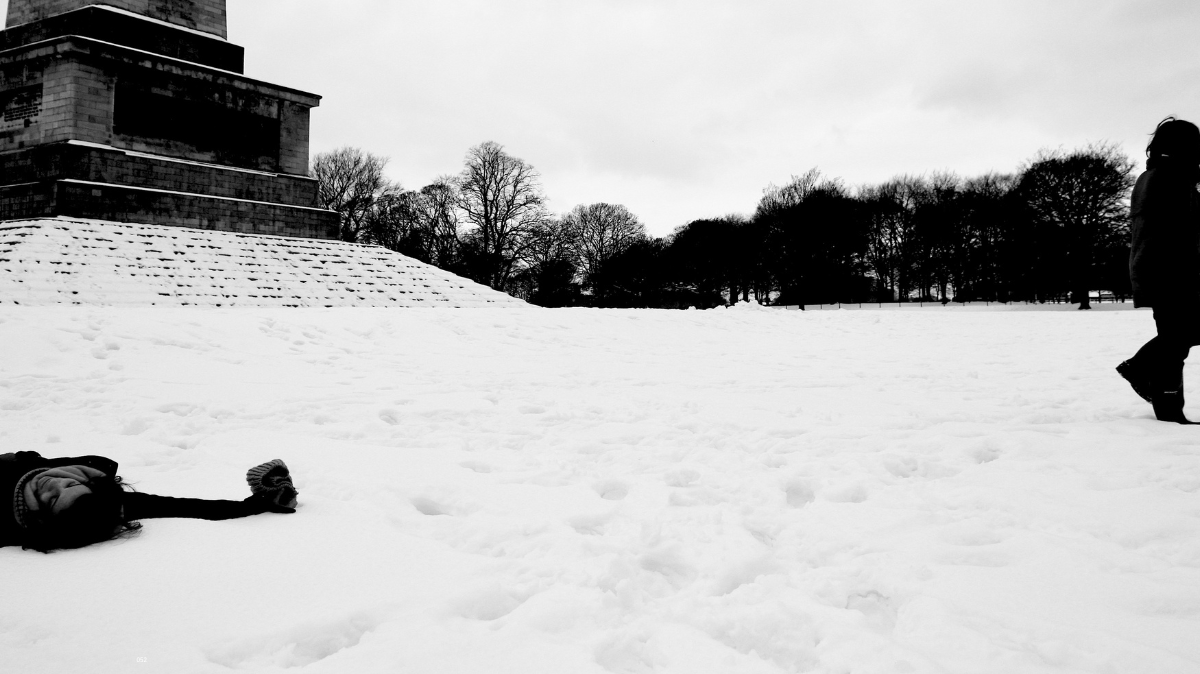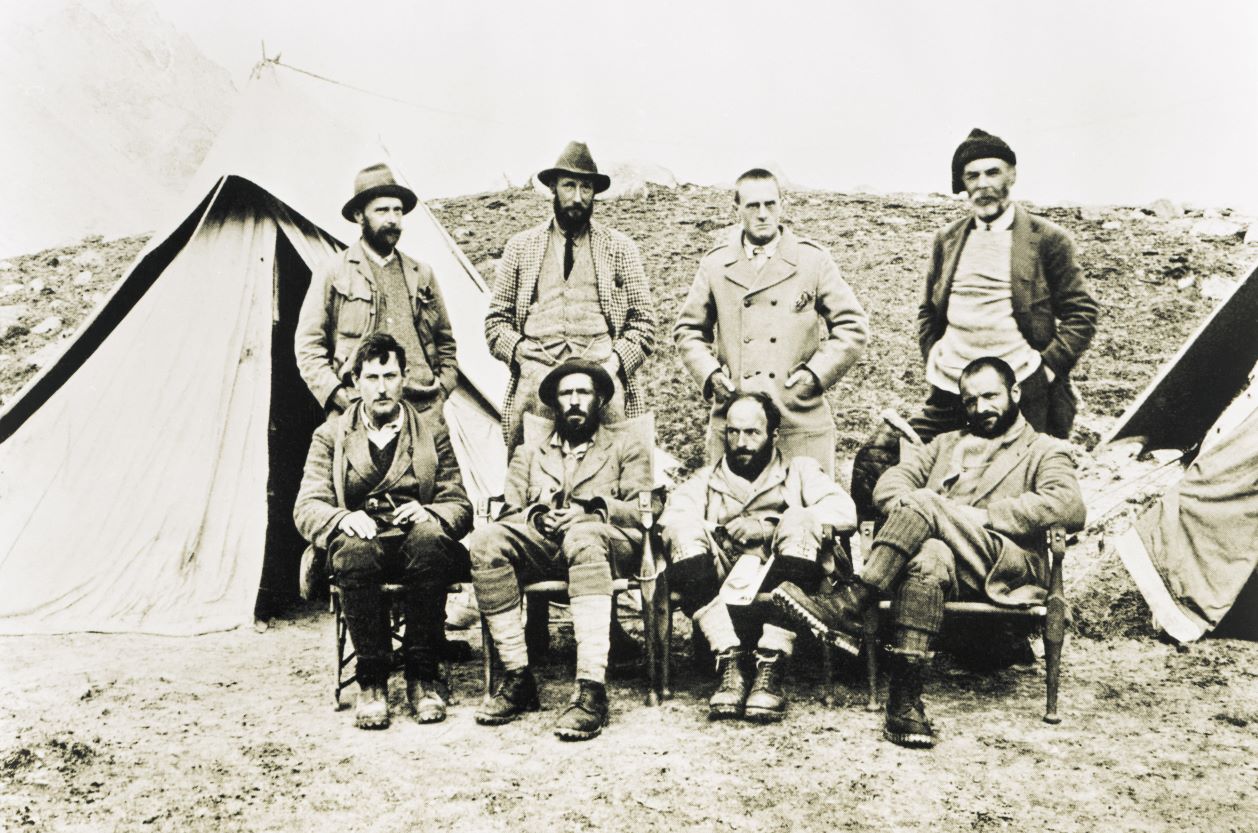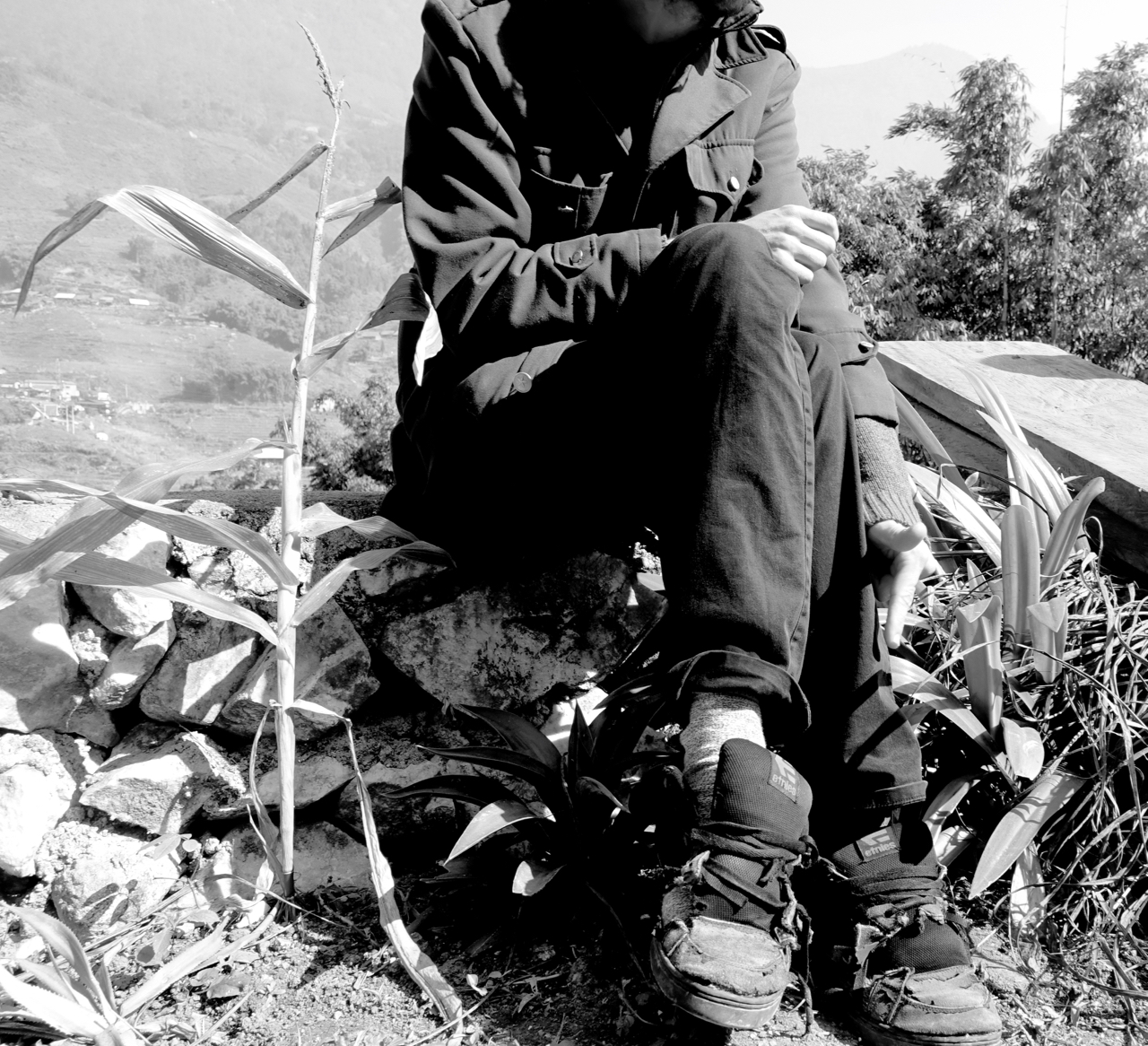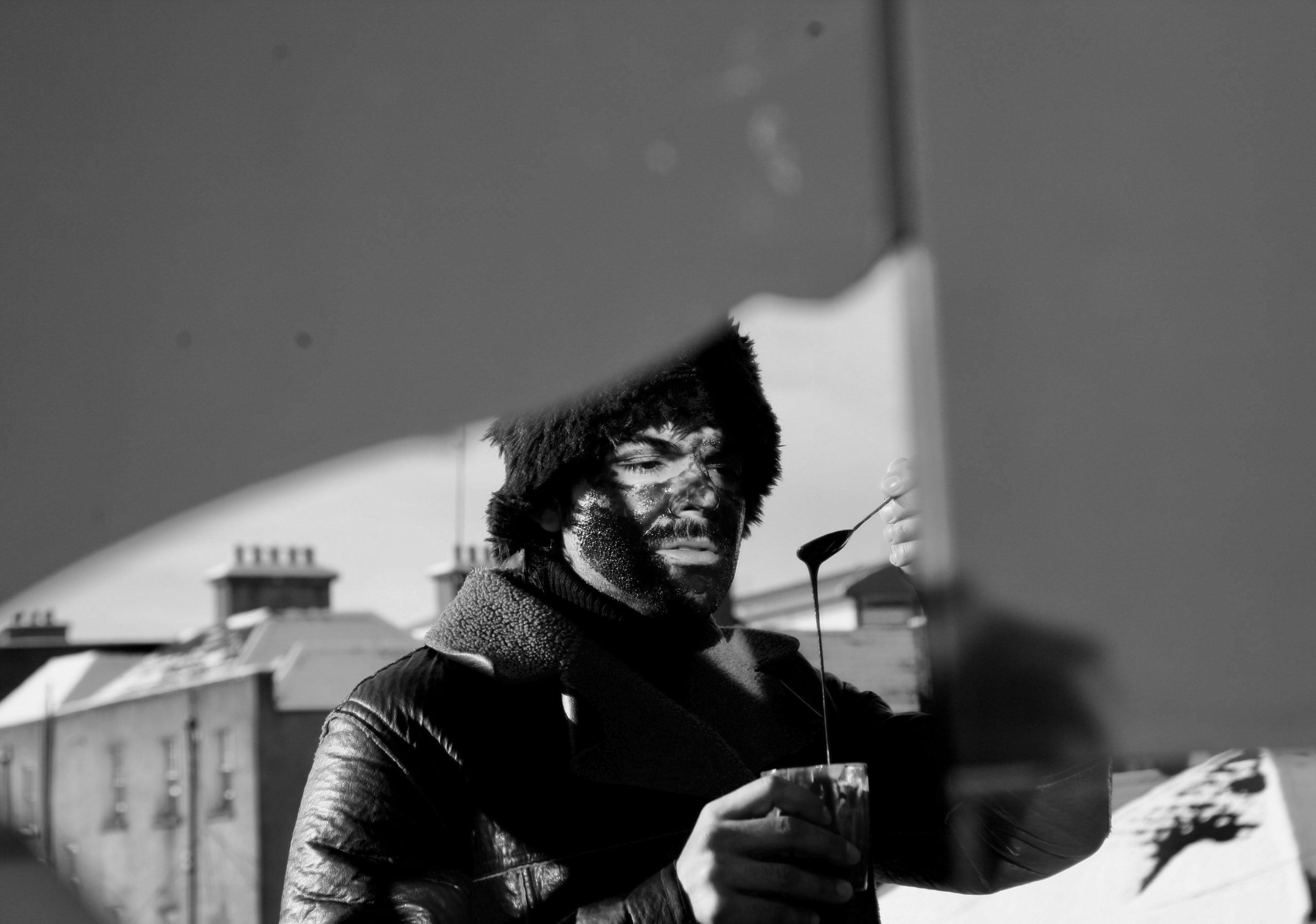NOWHERE-NOW HERE, HECTOR CASTELLS TRAVEL JOURNAL – THE NEPALESE DIARIES II
The Nepalese Long Stories
#2—THE ABOMINABLE MIST
Asian sages long before the time of Christ had intuited correctly that the galaxies numbered in the billions, and that universal time was beyond all apprehension: more than four billion years was but one day in the existence of their Creator, no more than “a twinkling of the eye of the immutable, immortal, beginning-less Lord, the god of the Universe.”
Peter Matthiessen, The Snow Leopard.
Now Here, Kathmandu, May 2025
Last Tuesday life, as I knew it, became the Gloomiest Monday. The Narcissist and I were outside a lovely hotel in Kathmandu. Our Nepalese fixer, Rishi, was about to relocate us to a safe place in his jeep, when two alleged Interpol agents ambushed us. The larger one, an enormous furry bastard, inflicted a blow to the Narcissist’s head with a steel club. Rishi managed to drive him away, but I was left behind. My left strap got ripped off, my underwear exposed, his belongings rolling under the absent moon like a mad, tiny snowball.
It’s been five days without news and I fear the worst, so I have decided to step in and finish the story on his behalf. Since I’m the only witness and I have his orphan belongings inside me, I’m a legit literary executioner. It is my unsolicited duty to transcribe and edit the Narcissist’ calamitous handwritten pages and endless notes, and finish this story.
THE OBNOXIOUS OLIVE
My name is Olive, by the way. I’m a Parisian backpack unfortunately made in China, hence my underwear. I have been the Narcissist’ only luggage and company for the last decade.
I feel for him, even though I have no feelings.
This story was inspired by a dream —if not a nightmare. The Narcissist suffered it while reading Wade Davis’ Into the Silence, which along Peter Matthiessen’s’ The Snow Leopard are the main two volumes he was sourcing while writing this:
The Scorching Mist — Nowhere—Elsewhere, April 2025.
There is an evil, scorching mist: it dazzles you before it burns you. The snowflakes swirl under the blizzard like albino geckos spitting fire, and once the sunshine hits the crusted ice, the radiation is instant: it melts your skin and laser-blinds your corneas.
This is how your Himalayan dream becomes your nightmare. You narrow your eyes. You can barely make out the silhouette advancing under the snowstorm towards you. You squint; he, whatever he is, smirks.
He is wearing the groin cloth, the 8TH century phurba, a fine, deadly scythe; and the exact same sheepskin coat used by Tibetan soldiers 1400 years ago.
Oh My Lord of the Rings and Game of Thrones! Mother of the Dragons!
FANGS CHEWING HILLS
He is immune to the frost radiation, loftier than a sequoia tree and bushier than a Spaniard moustache from the Dark Ages.
You can make his flushed smile crack up the lashing white.
Next thing he opens his mouth. His dentition is the ultimate radiography of the Himalayas: thirty-two peaks turned into immaculate fangs ready to devour you.
He roars like a thousand predators abusing Beethoven.
And the rest is (your) silence.
Now Here: Ting Ri, Tibet —circa 8th century
“If you can not sustain my teaching misadventure certainly befall you.” —PadmaSambhava AKA Guru Rinpoche. (8TH century)
A REDEEMER PETRICHOR
In his Zen essay The Snow Leopard, Peter Matthiessen recalls that in the 8th century the trail of horror left by the Tibetan army was so savage that Trisong Detsän, the ruthless king, decided to spare his people from daily-visual- abhorrence. His army had just obliterated and banished the Chinese Tang dynasty, and Trisong sought redemption in an Indian figure, the sage PadmaSambhava, AKA Guru Rinpoche (the precious Guru).
Sambhava was summoned to sacralise the Himalayas. If he succeeded in cleansing the unfathomable heights, the ripple effect would turn the blood-stained-snowflakes into raindrops purging the death-infested soil —a Redeemer petrichor.
KARMA SHIELD. Tingri, Tibet. —B.C. AND BEYOND C’s
Sambhava walked the deadliest cliffs barefoot and oblivious to food, sleep or fear. The scale of the mission proved unmanageable for a single hero, therefore he invoked the only one that could help.
Siddharta manifested swiftly, considered the issue, crouched, picked a spherical stone from the ground, threw it down the Himalayas, and told Sambhava that if he were to find it, the seed of holiness would bloom all over the valley.
SAMYE EAST
Sambhava not only found the pebble: he used it as the cornerstone of Samye, the first Buddhist temple ever built in Tibet. He would go on spreading the faith and translating the canon of Buddhist scripture from Sanskrit, until the hills and the plains of the doomed land became the same fertile soil where the Buddha had attained Nirvana a few centuries prior, born a stone’s throw away from Samye, ironically.
FOUR THOUSAND YEARS OR A SECOND
The centuries rolled, swallowed time and spat its corpses, and the big wheel of storytelling kept on fuelling and lapidating the tales of the unknown.
Not long after the departure of Sambhava, amidst the same iced gorges were he became the Redeemer; a new enemy was the hottest talk of every bonfire.
“He was a fearsome, hairy, reddish-brown creature larger than a bear that would devour you in a mouthful,” evokes Matthiessen. Over the centuries, no evidence of its existence was gathered: many claimed to have seen it, but no one had proof. It was not until 1951 when a young mountaineer from Missouri, Eric Shipton, took a photo of a large footprint on the Himalayan iced crust. Eric had left home to engage in the sentimental hunt of the “Abominable Snowman.”
HOWIE
Eric had learnt about the abominable in Missouri, while reading about the first reconnaissance expedition to Mt. Everest in 1921. The military leader of the group, Charles Howard-Bury, an Irish royalist and remarkable botanist, had coined the term while fighting for his men’s lives at 20 thousand feet. Eric became irresistibly drawn and then haunted by the catchy epithet.
Now Here: Everest, June 13th, 1921 — THE ABOMINABLE
Howard-Bury and his mountaineers were exhausted, almost blue, engulfed by nasty blizzards and vertiginous falls, trying to open a route to the summit, and failing. They had been stranded for days at the highest altitude ever met by a human, and they had lost contact with their surveyor and photographer, Oliver Wheeler, the man who had the key to survival.
While fighting the evil weather, stranded NOWHERE, news reached that the only story about the expedition their native English readers care about back home was that of a colossal hairy creature.
“The fucken’ Abominable Snowman? For real? What’s wrong with people? They go through The Great War and come out believing in fairy tales, oblivious to the true fight?” Howard-Bury crumpled the insidious telegram with his frostbitten hands.
Ahead of him, his leader mountaineer, the irresistible and indefatigable George Mallory, was losing it. “Forget about the Yeti and the damned readers, where is Wheeler? We are lost without him!”
His voice was so loud, that a chunk of ice the size of Iceland started to crack on the ice ridge looming above them.
MANYWHERE, 1973
“GS refuses to believe that the Western mind can truly absorb nonlinear Eastern perceptions; he shared the view of many in the West that Eastern thought “evades” reality and therefore lacks courage of existence. But the courage-to-be right here and now and NOWHERE else, is precisely what Zen, at least, demands: eat when you eat, sleep when you sleep!” — Peter Matthiessen (The Snow Leopard, 1978).
During their emotional odyssey from the Nepalese hills of Pokhara to Crystal Mountain, on the Tibetan Himalayas, the fine writer Peter Matthiessen and his travel mate, the field biologist George Schaller (GS) were in search of two different and yet very relatable creatures. PM was determined to spot the seldom seen white predator he would devote his acclaimed essay to: the snow leopard.
GS had a more prosaic mission: to document the life of the blue sheep, a favourite prey of the white beauty that PM had his eye on, and an animal much easier to come across. They were eminences in their fields and perfect opposites when it came down to religion, politics, history, philosophy or animals. At times, the demented ascending brought them to the brink of murdering each other.
PUSH!
“GS remarks, ‘This is the first really interesting stretch of trail we’ve had so far.’ How easy it would be to push him over.” Peter Matthiessen. The Snow Leopard.
PM and GS had been deserted by their porters not far from to the infamous Tingri, the same ground that Sambhava had purified. On a particularly wet and starless night of October, both worn out and freezing by the bonfire, Matthiessen was trying to explain to GS the fundamentals of the linear sense of time and space in Eastern philosophies, and its connection with his Zen practice.
“Snow mountains, more then sea or sky, serve as a mirror to one’s own true being, utterly still, utterly clear, a void, an Emptiness without life or sound that carries in itself all life, all sound.”
GS thought it was “amusing gibberish lacking scientific evidence.”
George would never get angry, although he found it hard to understand what his travel companion was doing: how could he have embarked on such a deadly journey leaving his motherless daughter behind?
The fire was dead and PM, the same man who had co-founded the iconic magazine The Paris Review and had been a one time CIA agent twenty years before, kept on talking about the notion of being “right HERE right NOW; NOWHERE!”
GS could not take it any longer:
“Chances are that in your delusional journey you will find the Yeti before the damned Snow Leopard.”
Only then they heard the roar.
It sounded like a thousand predators abusing Beethoven.
They looked up.
GS saw the Himalayan fangs before the massive uvula, and thought that he had become a prophet, perhaps the chosen one, for the first and last time. PM blinked and forgave for the last time.
The rest is (their) silence.
ROLLING STONE —Tibet, 1921
It is a freezing morning of June 1921. Oliver Wheeler is climbing the hills above the ground where Sambhava had found the spherical stone, although he is oblivious to the story. Wheeler knows that this could be the end. He has been stranded for weeks under furious, devastating winds and blizzards, the only gleam of hope living in Mallory’s smile every time he closes his eyes.
God. George is hot. And you want to be warm around here, although it is impossible.
Oliver survives another night curled in Mallory’s smile with his eyes closed.
THE MAP AND THE TERRITORY
Next morning, he is sitting alone with his tools: scale, compass, triangle and a self-made mid format camera. His limbs are blue, his lips cracked. He is undernourished and exhausted but far from defeated.
Today, for the first time in weeks, the sun is shining and Wheeler is smiling: he can see his whereabouts with such clarity that once he leaves the tent he can’t stop climbing up and down for miles. He measures, touches, photographs, kisses, and discovers: birds, butterflies, flowers, the garden of Sambhava fully blooming for miles, while he walks, jumps, runs and lies on the ground beyond euphoric. THIS IS EXHILARATION!
SCORCHING MIST RELOADED
There is only a con, and it is deadly. There is an evil, scorching mist that has left Oliver half blinded, his skin chargrilled. But then again, he couldn’t care less: he is on a roll; he can summon the universe foundational milk and claim that he is the Mother and the Father cartographer of the Milky Way and the fucking Cosmos —let alone the Himalayas.
By the end of the day, blinded, burnt and ever so smiley, Wheeler has mapped out over 20K square meters of territory, he has traced the gorges and the ravines, the hills, the whole picture is clear as day in his mind.
By dawn, after nine months of analogue scanning and photographing, the job is done: he has drawn with insane accuracy the only way up to Mt. Everest: there is a sharp-edged pass carved by glaciers in the ridge connecting Mt. Everest and Changtse, in Tibet. It will be from now on and thanks to him the crucial base camp to the future routes to the summit, known as North Col.
The Reward
At dusk Wheeler finds himself a frozen spot, sets camp, lights a fire with yak dung, and grabs his 125 year-old Cognac flask. He hasn’t touched it for nine months. He wanted to share it with his fellow climbers. But to hell with it: he has just made history and he knows it; and he also knows that he is the only one who knows.
Next thing he looks at the flames and feels so lonely, tiny, incongruous, lesser than a grain of crushed millet, the exact opposite of his ground-breaking achievement. He is emotional. He cries and laughs, he is the fundamental lonely idol and he knows that whatever he knows is on the brink of extinction.
The shadow of the beast has already darkened the flames. The only light lives inside its mouth, a set of teeth replicating the Himalayas; then the sound, the symphony of a thousand predators abusing Beethoven. The rest is silence.
Now Here, Kathmandu and Jomsom, Nepal, June 2025th.
Last night, the Blunderer dragged me out of the mouldy luggage room where I have been kept since the Narcissist’s vanishing, and stuffed me on the back of his jeep, my lumbar pad splattered against the back window. What a careless beast: it felt like he had pawns instead of hands: I had never been lifted so effortlessly, and I kind of loved it in a pin-up backpack sort of way.
The Blunderer drove for hours like a maniac through impossible dirt roads and deadly high passes, and even though I have never seen such ominous, stunning canyons or endless rhododendrons hanging like rainbow stalactites over the dizzying ditches; even though I wanted to be the first backpack to climb Mt. Everest alone, without a fucking human attached to my pad bra, I would rather not see those pink skies nor the neon birds and the menstruating clouds again, if this psychopath were to drive.
The Blunderer was wearing latex gloves and a mask, and kept talking on speakerphone to a man whose voice sounded like a black hole abusing deaf metal.
I kept my cool and resisted the impulse to crack the suffocating back window and slid through the same ravines and gorges that PadmaSambhava had purged —at least, according to the Narcissist or Matthiessen.
I was ready to embrace eternity when the black hole voice said: “Turn left on the next junction, and then look for signs to Mutkinath temple. The Harper God and Rishi are hiding underneath it.”
EPILOGUE, MUTKINAH, NEPAL, JUNE 2025
The Blunderer roars like a Mammoth and smells like a hundred tigers in a toilet. He parks at the edge of a cliff, gets out, and comes to the boot of the jeep. Only then do I realise that he is the same bushy animal that hit the Narcissist’s skull.
He is larger than any other human mammal I have ever seen. The snowed peaks flooding the landscape are lesser than the tiny lights of a white Xmas tree sheepishly tracing a halo around his Minotaur head.
Next thing, he opens his mouth: it feels like witnessing a landslide sweeping Everest and Annapurna, brushing the peaks of the Earth towards the base camp of his uvula, that appears to be dancing flamenco.
I say my famous last words, a prayer to North Face, Patagonia and all the privileged brands that have improved the history of my carrier-species better than my cheap Chinese manufacturer.
I see George Mallory, Oliver Wheeler, Peter Matthiessen, George Schaller and Howard-Bury before I see nothing else.
The rest is silence.
(TBC)





